How to Make Faux Locs Less Frizzy – 10 Tips + Best Products
Updated on
This post may contain affiliate links. As an Amazon Associate, we may earn from qualifying purchases.
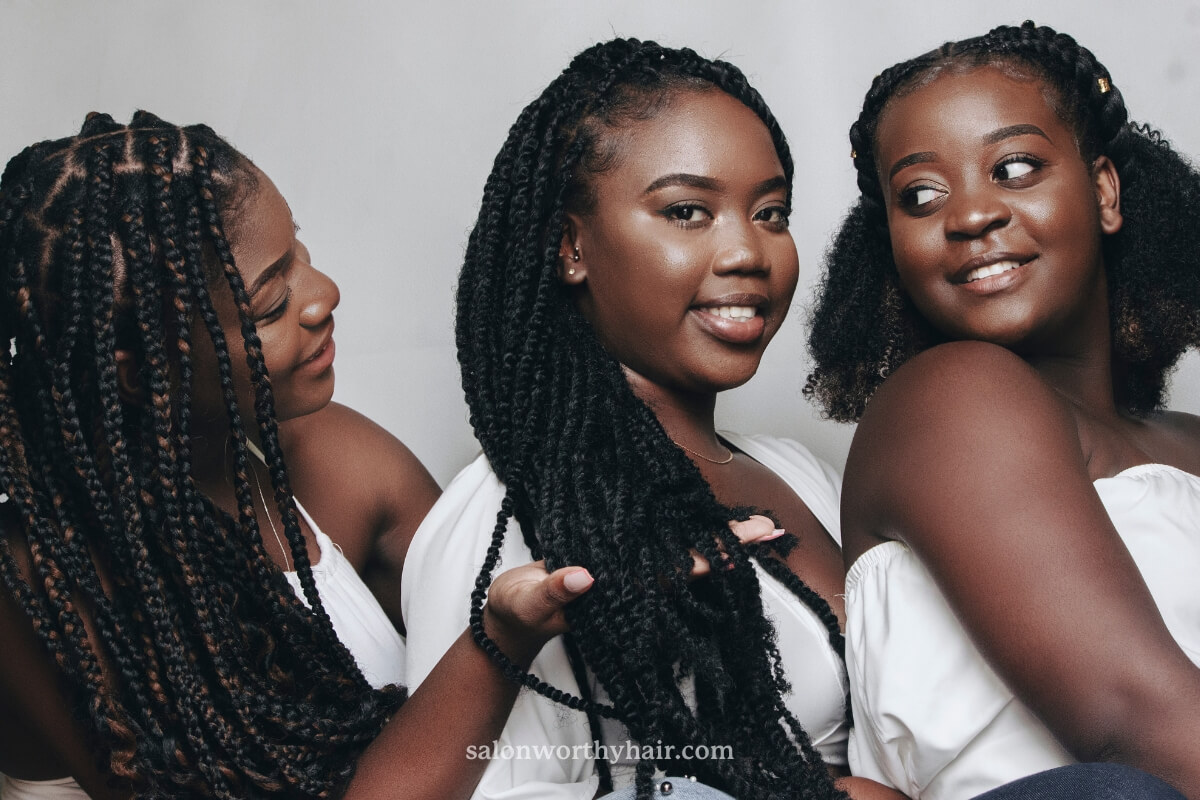
Faux locs have become one of the hottest trends in protective hairstyles as an easier alternative to natural dreadlocks.
They are meant to be a low-maintenance protective hairstyle, but frizz can quickly turn them into a high-maintenance, frustrating, and time-consuming nightmare.
Whether you’ve had your faux locs for a few days or weeks, frizz can start to show up and make them look messy, unkempt, and even unravel.
This article will discuss a few simple steps to make faux locs less frizzy and prevent them from slipping and unraveling.
But before we dive into the tips, let me explain why faux locs get frizzy. This way, the tips I am about to reveal will help you tackle the problems from the source.
To control and prevent frizz in synthetic dreads and faux locs, follow the instructions below:
1. Wrap Your Faux Locs in a Satin or Silk Bonnet Before You Sleep
To keep your faux locs in good shape while sleeping, wrap them in a satin or silk bonnet before bed. This will help prevent friction and stop it from getting tangled and rubbing against your pillowcase.
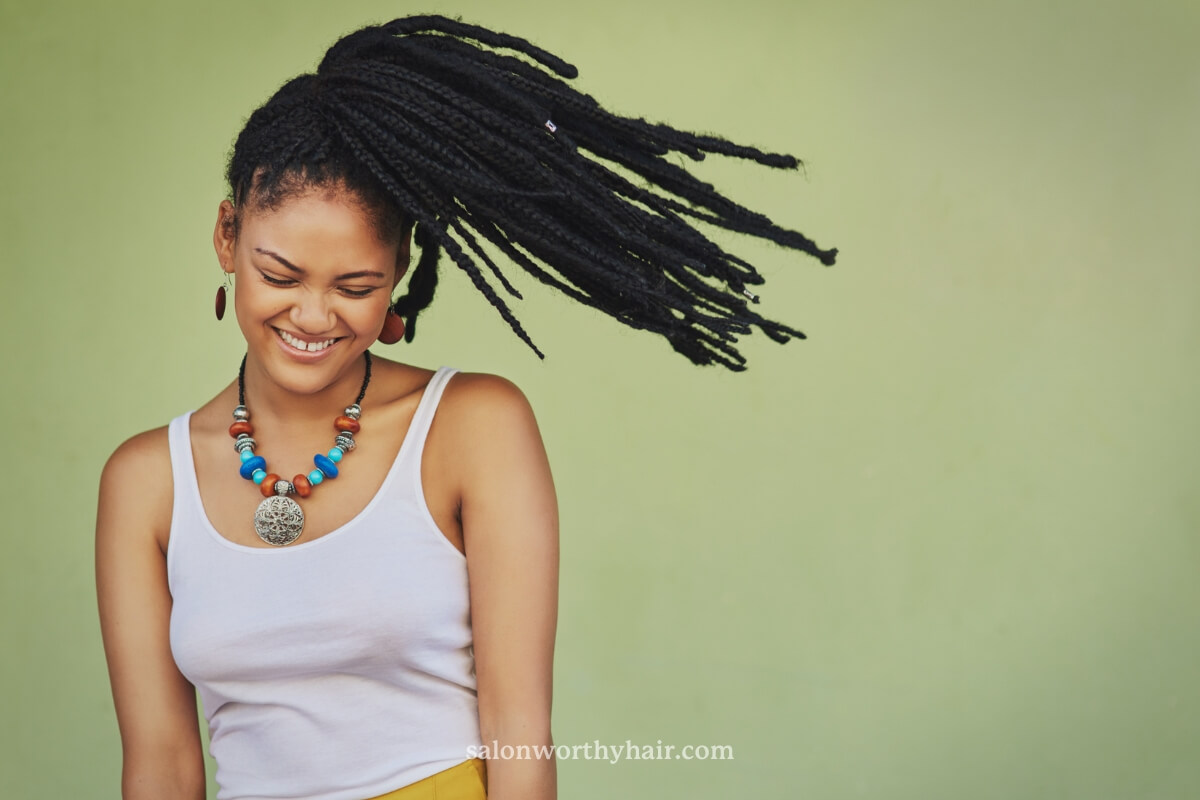
In particular, cotton pillowcases are not the best choice for faux locs, and here’s why:
Cotton is highly absorbent, meaning it absorbs moisture from your locs and dry them out. This is especially problematic for faux locs because they are made from synthetic or human hair extensions, which do not have the same natural oils and moisture as your real hair. When your locs are dry, they become brittle and prone to breakage, leading to frizz and a less polished appearance.
Another issue with cotton pillowcases is that they create friction and tension on your locs as you move around in your sleep. This causes tangling and matting, which can be difficult to undo without damaging your locs.
That’s why wrapping your locs in a satin bonnet or silk scarf protects them from tangling and frizzing up. The smooth and soft texture of these materials helps to minimize friction and tension on faux locs, reducing the amount of maintenance and styling in the morning.
Recommended: Best silk and satin bonnets for sleeping.Instructions to Wrap Faux Locs at Night
- Gently finger detangle your locs to remove knots or tangles.
- Brush your hair with a wide-tooth comb to smooth out any bumps or kinks.
- Gather your locs at the nape of your neck and twist them gently into a loose bun or ponytail.
- Wrap a silk or satin scarf or bonnet around your head, covering your entire head and hairline.
- Tuck the edges of the scarf or satin bonnet under your bun or ponytail to secure it in place.
- You can use bobby pins to hold the scarf or bonnet around your hairline for extra security.
- In the morning, gently untwist your locs and finger-comb them to remove any kinks or bumps.
Another alternative is to use a silk pillowcase. It offers many of the same benefits.
2. Smooth Out Your Faux Locs with Hot Water
Hot water helps to seal the outer layer of the synthetic or human hair used to make the locs, creating a smoother surface and reducing the appearance of frizz. This is especially useful for faux locs that have become very stiff.
The process of smoothing out faux locs with hot water is straightforward.
Here’s how to do it in a few easy steps:
- Boil some water and allow it to cool down until it’s warm (not too hot).
- Section your locs into small, manageable parts.
- Dip each section into the warm water, holding it there for a few seconds.
- Be careful not to burn yourself or allow the water to touch your scalp.
- After you’ve dipped each section, gently squeeze out the excess water.
- Gently pat with a microfiber towel to blot dry your locs.
- Use your fingers or a wide-tooth comb to smooth out any kinks or bumps.
- Remember to work from ends to roots to gently detangle.
The hot water method works by resetting the synthetic or human hair in the faux locs, helping to eliminate frizz and flyaways.
Editor's Note:
Hot water may not work for all faux locs, especially if they are made from low-quality materials or have already been damaged. Do a test on a small section of the hair before you do it all over.3. Use a Hair Mousse for Frizzy Hair
You can use a hair mousse on faux locs to tame frizzy edges, surface frizz, and flyaways. These are small, fine strands of hair that stick out from the surface of the locs and can create a fuzzy or unkempt appearance. Mousse can help to weigh down these flyaways and create a smoother, more polished look.
Use it sparingly for lightweight touch-ups. Don’t expect a hair mousse to fix frizz that occurs within the body of your locs. It won’t work. This type of frizz is caused by individual hairs within the locs becoming tangled or unraveled and may require more extensive styling or maintenance to fix.
Here’s the best mousse for faux locs I recommend:
Locsanity Alcohol-free Styling Mousse for Locs
4. Moisturize Your Faux Locs
Synthetic or human hair extensions do not self-moisturize as real human hair. They constantly need moisturizing to avoid dryness and breakage.
To keep them hydrated and smooth, faux locs and synthetic dreads must be moisturized with products that contain the following ingredients:
- Glycerin.
- Aloe vera.
- Shea butter.
- Jojoba oil.
- Argan oil.
Avoid products with the following ingredients:
- Alcohol – Can cause locs to become brittle and prone to breakage.
- Thick oils – Mineral oil or petroleum jelly can create buildup and require frequent washing.
- Silicones – Can create greasy and heavy buildup.
- Sulfates – Very drying.
Here’s the best moisturizer that will keep faux locs from frizzing:
Dollylocks Spray Moisturizer for Locs
5. Use a Leave-In Conditioner
In addition to regular moisturizers, leave-in conditioners can provide long-lasting hydration without weighing your locs down or creating buildup. They can help to detangle and seal in moisture, to prevent dryness and frizz.
They also provide extra protection and hydration to your faux locs, keeping them smooth, shiny, and resistant to humid weather conditions.
To use a leave-in conditioner, simply apply it to your locs after washing and gently work it through with your fingers or a wide-tooth comb. You can also use it throughout the day to help keep your hair hydrated and prevent frizz.
6. Avoid Overstyling and Over Manipulating
When you constantly touch, twist, or manipulate your locs, you create friction and tension that can cause individual hairs to become tangled or unraveled. This can lead to frizz and a rough, unkempt texture in the hair.
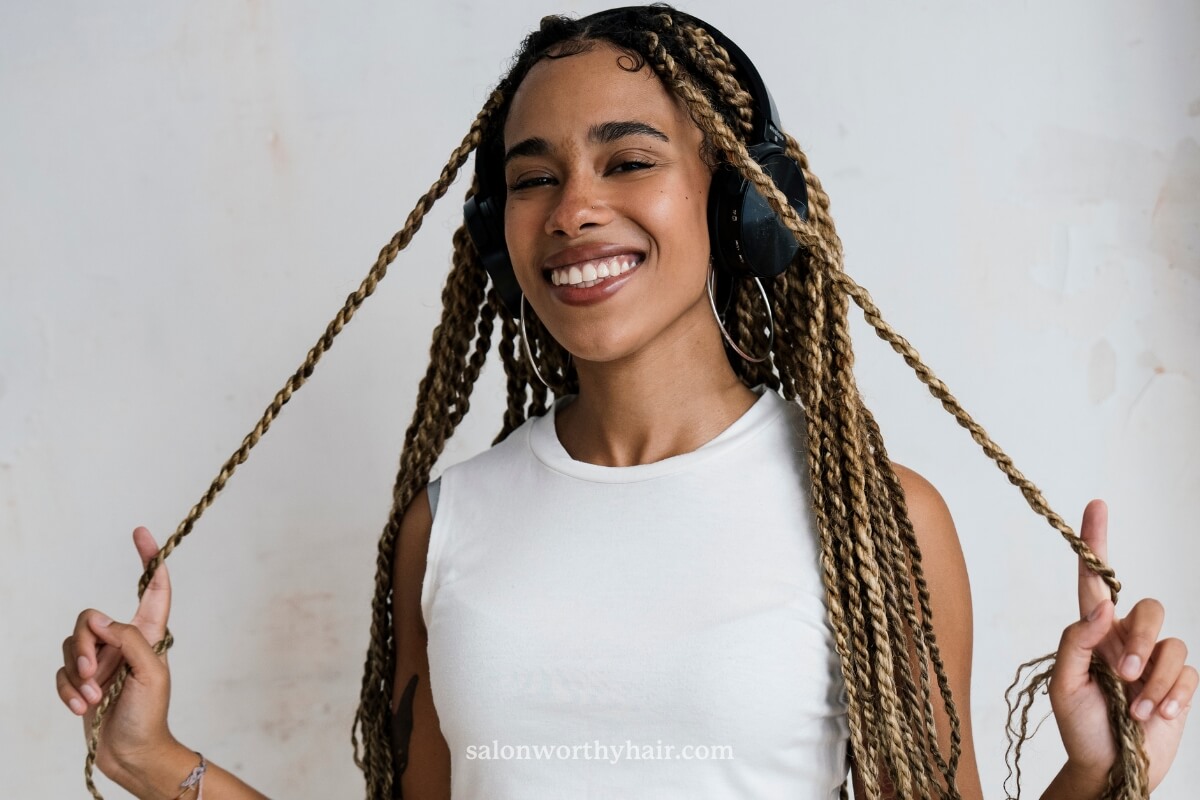
Over-styling and over-manipulating can weaken your faux locs, leading to thinning or balding patches, which can be difficult to fix without removing the locs entirely.
To minimize touching and twisting and avoid excessive heat or chemical treatments. Instead, focus on gentle maintenance and care, such as regular cleansing, moisturizing, and gentle finger detangling.
7. Use a Faux Locs Tightening Hair Gel
A faux locs tightening hair gel is specifically formulated to help tighten and secure faux locs, preventing slippage and unraveling of the locs. It can also help to smooth down frizzy strands, creating a more polished and put-together look.
Many of these gels contain aloe vera, shea butter, or jojoba oil, which help moisturize and strengthen the hair, preventing dryness and breakage.
8. Trim Your Locs
Trimming faux locs is an important step in reducing the appearance of frizz by removing stray strands that unravel from the main body.
By trimming your faux locs regularly, you can keep them looking neat and tidy. Trimming also helps to prevent split ends, which can further contribute to frizz.
I recommend you use sharp scissors and work carefully to avoid cutting too much or creating uneven sections. Start by separating your locs into sections, then gently comb through each section to identify stray strands or damaged areas. Then use the scissors to snip away the damaged parts to prevent them from causing unsettling the rest.
9. Burn and Seal Your Locs
Another alternative to cutting and trimming is to use a lighter to burn away the loose strands sticking out from the surface of the locs.
How to burn and seal faux locs step-by-step instructions:
- Start by holding a lighter or candle flame close to the stray strands of hair.
- Be sure to work carefully and slowly to avoid burning too much hair.
- Use a comb or your fingers to press the hair down as it burns.
Use a hair serum or light oil to prevent the burnt braids from sticking together.
Quick note: Burning hair can be dangerous and cause damage or injury if not done properly. Always ask a professional hairdresser to do it for you.10. Refresh Your Faux Locs
Refreshing your faux locs can greatly reduce frizz and keep them looking fresh and in good shape. There are several steps in refreshing faux locs, including wrapping, re-twisting, removal, cleaning, and re-installation.
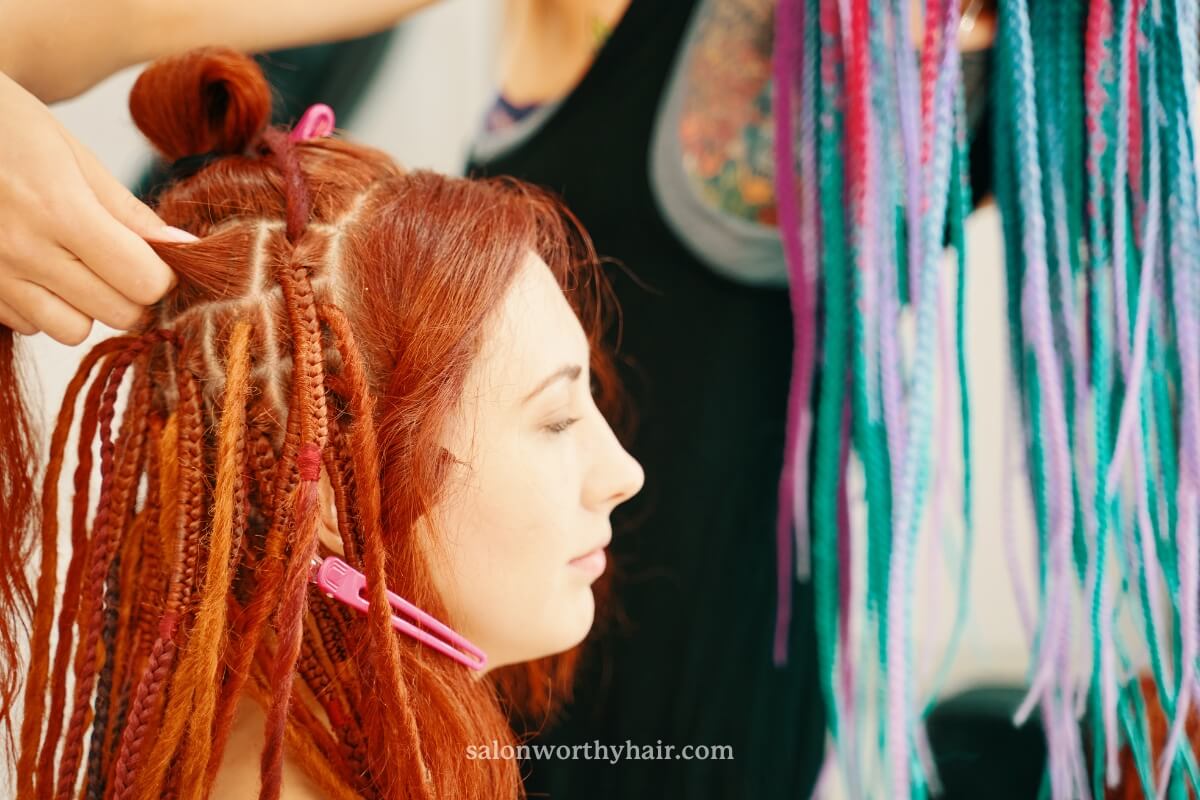
- Re-twisting: If your faux locs have become loose or untwisted, re-twisting them can help to create a more polished and put-together look. Use a small amount of styling gel or mousse to help hold the hair in place, and gently twist each loc back into place.
- Removal: If your faux locs have become too frizzy or damaged, you may need to remove them and start fresh. This can be a time-consuming process, but removing damaged or frizzy hair is important to prevent further damage.
- Cleaning: Before re-installing your faux locs, clean your hair thoroughly to remove any buildup or dirt. Use a clarifying shampoo and follow up with a deep conditioning treatment to help hydrate and nourish the hair.
- Re-installation: Once your hair is clean and dry, you can re-install your faux locs using the same method. Take your time and work carefully to create a neat and polished look.
Why Do Faux Locs Get Frizzy?
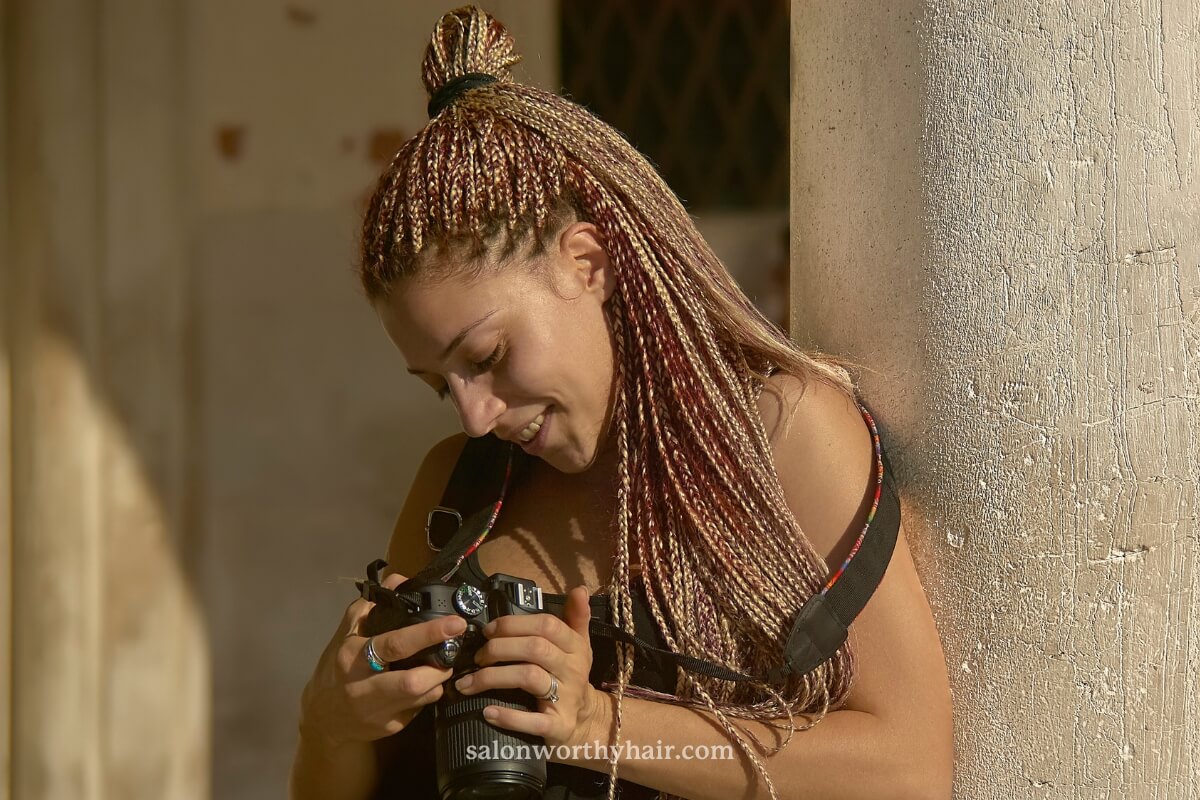
Faux locs tend to get frizzy due to:
- Lack of natural sebum like human hair,
- The absence of a protective cuticle layer,
- Poor response to moisturizers,
- Stiff fibers that rub against each other,
- Lack of elasticity,
- the wearing off of their silicone coatings,
- and the quality of the materials used.
Faux locs are synthetic dread extensions that mimic the look and feel of natural dreadlocks. They are made from different types of materials like Marley hair and Kanekalon.
- Marley Hair
- Marley hair is a type of synthetic hair used for braiding and creating protective hairstyles such as box braids, twists, and faux locs. It is named after the famous Jamaican singer Bob Marley, who was known for his signature dreadlocks. Marley hair is usually made of a flame-retardant material such as Kanekalon or Toyokalon, which is designed to mimic the texture and appearance of natural hair. It is available in various colors, lengths, and thicknesses, making it a popular choice for creating versatile and stylish looks.
- Kanekalon
- Kanekalon is a synthetic fiber used in the production of various hair extensions, including braids, weaves, and wigs. It is a brand name for a type of modacrylic fiber produced by the Japanese company Kaneka Corporation. Kanekalon fibers are composed of acrylonitrile and vinyl chloride monomers, which are chemically modified to produce a fiber with properties similar to those of natural hair. Kanekalon fibers are known for their softness, durability, and heat resistance, which make them a popular choice for hair extensions.
Unlike natural dreadlocks that are permanent and done from tightly interlocked strands of your own natural hair after it’s grown to a certain length, faux locks are a temporary hairstyle created by braiding or twisting hair extensions made of synthetic hair or human hair into the natural hair. You can install faux locs and remove them easily. Hence the term “faux,” which is a French word meaning “false” or “fake.”
Faux locks can also be created by using real human hair. But they are a lot more expensive.
The most popular choice is synthetic hair due to their affordability, versatility, and ease of use. Faux locs can last anywhere from 4 to 8 weeks and can be removed easily by unraveling the extensions or cutting them out, allowing the natural hair to remain unaltered.
Unlike natural dreadlocks, faux locks can be styled and changed frequently without damaging the natural hair.
But that comes with a caveat.Faux locs and synthetic dreads have limitations compared to natural dreadlocks. They require careful maintenance. Otherwise, they can slip, unravel, and become frizzy.
Here are a few reasons why:
- Lack of natural Sebum
Synthetic hair, unlike human hair, is not attached to the scalp. Therefore, they do not get the natural sebum, the oil the scalp produces naturally to moisturize and protect the hair. As a result, synthetic dreads tend to be drier and more prone to frizz than natural hair. Without sebum lubrication, synthetic hair can become brittle and stiff, and the fibers can rub against each other and create friction, leading to frizz in the faux locs. - Synthetic hair does not have a cuticle layer
Unlike human hair, synthetic hair does not have a cuticle layer, which helps to protect the hair and keep it smooth. Without this protective layer, synthetic hair is more susceptible to friction and tangling, leading to frizz. - Synthetic hair does not respond well to moisturizers
Synthetic hair is often made from acrylic, polyester, or nylon, which does not respond well to moisture. - Faux locs are stiffer than natural hair
Synthetic hair fibers are often stiffer than natural hair, making them more likely to rub against each other and create friction. Real human hair, in contrast, has a natural elasticity that allows it to move and stretch more flexibly. - Their silicone coatings wear off
Synthetic hair is often coated with a silicone layer to make it appear shiny and smooth. However, this coating can wear off over time, leading to dullness and frizz in the faux locs.
To Summarize:
Synthetic hair does not absorb moisture as natural hair does. It does not have the same natural physical characteristics as human hair. That’s why it’s more challenging to keep faux locs hydrated and soft.Best Products for Frizzy Faux Locs
To help you further with the above tips, we have curated a list of the best products you can use to eliminate frizz in faux locs and maintain them in good condition.
Dollylocks Shampoo
The Dollylocks shampoo is designed specifically for faux locks and natural dreadlocks. It is lightweight, residue-free, and does not contain sulfates.
Here are the reasons why you’ll love the Dollylocks shampoo:
- Made from natural ingredients.
- Floral and earthy Nag Champa scent.
- Hypoallergenic and pH-balanced formula.
- Residue-free and weightless to prevent product buildup.
- Ingredients including pure botanicals and organic coconut.
- Suitable for natural and synthetic dreads.
To use it:
- Wet hair.
- Gently spread the shampoo to scalp and hair.
- Work it from roots to ends.
- Rinse thoroughly.
Use a lightweight conditioner after. But make sure to apply the conditioner from mid-lengths to the ends in a downwards motion to avoid weighing down the roots and creating buildup.
Dollylocks Tightening Spray
One of the main causes of frizz in faux locs is when they start to unravel or become loose.
The Dollylocks tightening spray helps to tighten and secure loose faux locs and keep them tidy. The spray can also control frizz inside the fake locs individually.
To use it:
- Shake well.
- Apply to damp or dry hair.
- Spray from roots to ends.
Dollylocks Conditioning Oil
The Dollylocks conditioning oil prevents faux locs from sticking together by keeping them soft and moisturized.
The oil also helps reduce frizz with its highly moisturizing formula containing avocado, coconut, Jojoba, and hemp seed oil.
To use it:
- Dispense a small amount into your palm.
- Rub your hands together and apply to your locs.
You can also use the condiioning oil as a scalp therapy to prevent your scalp from getting itchy or flaky underneath the protective style.
Dollylocks Tightening Gel
The Dollylocks tightening gel is a residue-free and water-soluble gel designed for taming frizz and little stray strands to keep new locs neat and tidy. It also contains hydrolyzed oat proteins, avocado oil, and omega-3 & 6 fatty acids that can help improve the elasticity of loc extensions.
To use it:
- Start with clean and damp dreadlocks.
- Apply a light coating evenly from roots to ends.
Dollylocks Refreshing Spray
The Dollylocks refreshing spray is like a dry shampoo for protective styles. It revives and refreshes faux loc hair and natural locs to eliminate odors and leave them smelling fresh and clean without the need to wash.
To use it:
- Shake well before use.
- Can be used on wet or dry hair.
- Apply to scalp and dreadlocks.
- Can be used daily or as often as needed.
Wrapping Up
It’s totally normal for faux locs to get frizzy.
Just because they are synthetic doesn’t mean they don’t require as much maintenance.
Treat them like your own hair and use products specifically designed for them.
About the Author
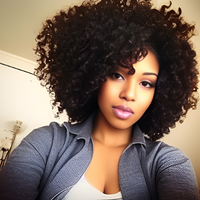 Kayla Davis
Kayla DavisKayla Davis is a self-proclaimed skincare and haircare junkie who loves testing out new products and writing about her experiences. Her bathroom shelves are always overflowing with beauty products. You name it - it's there.






